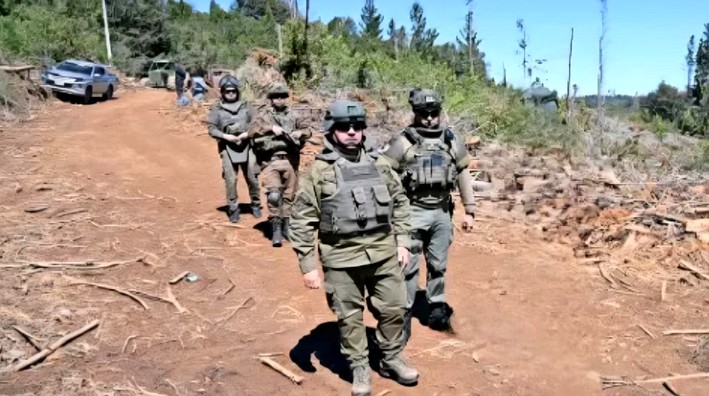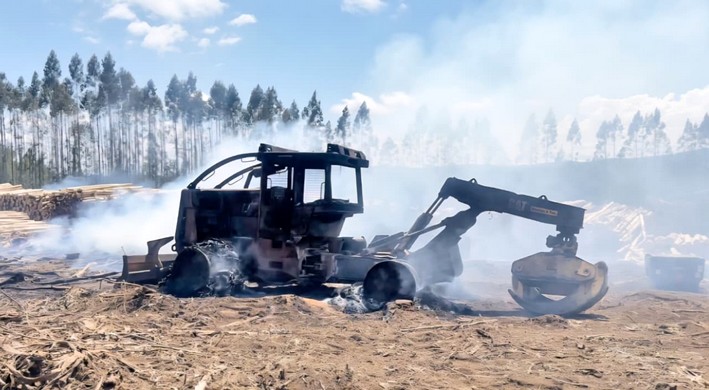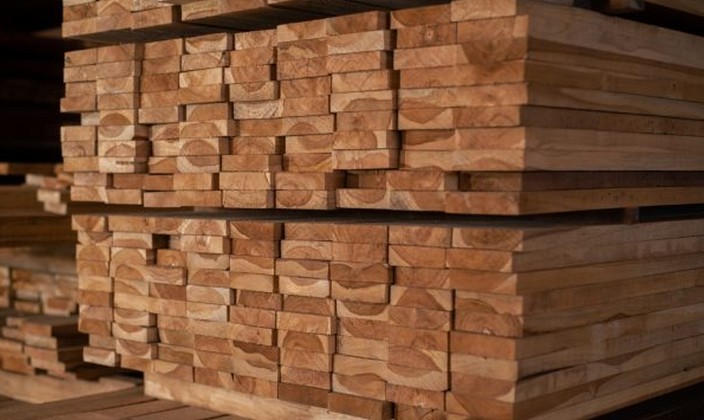The firefighter must be very responsible, because a wildfire is not something to experiment with
Zacarías Sandoval was a firefighter from a young age, and today, at 71 years old, he remains connected to this work as an instructor. He has trained over 5,000 new professionals.
Being a wildland firefighter is not an easy task. It requires sacrifice, vocation, and love for the work. That is what Zacarías Sandoval, now 71 and still active as an instructor, strives to impart to his students.
The firefighter is originally from Cunco in the Araucanía Region and has been dedicated to this field since the 1976-1977 season, starting with Conaf, then moving on to Mininco and the now-defunct Forestal Biobío, among other companies.
"I’ve spent 47 years working exclusively on wildfires, a subject that captivated me because once I discovered it, I never stopped. I started as a camp chief at Conaf, and as I grew to like it, I requested to participate in all the courses they offered because, at the time, the corporation provided a lot of training. I’m an agricultural technician with a specialization in fruit arboriculture, but I never practiced what I studied. Since I loved wildfires, I trained myself, and because I’m competitive, I like to do everything well from start to finish," he emphasized.
- And how did you do in the courses you took?
-I got very good grades without any wildfire experience. But since I had just graduated from school and managed an agricultural society, learning came much easier to me than for most firefighters. I had excellent grades, but it was all theoretical—I lacked practical experience. Back then, Conaf had a brigade chief and a camp chief. I asked for permission to start going out to wildfires to see what happened. I was fortunate that the Brigade Chief, Oscar Cariqueo, and the two squad leaders began teaching me everything. They were my mentors in the practical side until they left me in charge of a grassland fire. They corrected me in the field, and I learned a lot. It was the profession I loved, and I kept improving until I was offered the role of brigade chief.
- In that new role, how did it go, and how did you face the challenge?
-It went really well because there were so many fires, similar to what happened in 2017 and this summer, but in Araucanía. They pulled all the brigades from Malleco and Curacautín, leaving me alone in the first area fighting 10 to 12 fires a day. We’d control one and move to the next, with fewer firefighters and much more rudimentary conditions. Today, when I see the brigades, I feel a bit envious of the resources they have now.
-Currently, what are you doing? Still fighting fires or in another role?
-As part of my career evolution, I chose training. It’s been about 2 to 3 years since I last fought a fire, not because I can’t, but because I’m focused on training firefighters. Now, I work as a knowledge facilitator.
-After so long in this field, do you have an estimate of how many firefighters you’ve trained?
-I think I’m somewhere between 4,000 and 5,000, because until last year, we trained an average of 500 per season, and I’ve been doing this for 10 seasons.
-Since you started training firefighters, do you have better tools to teach? How does a firefighter from 10 years ago compare to today’s?
-It’s very different. The firefighter from 10 years ago stood out in attitude. The old-school ones had a special mystique—they were different from the rest. They were the kind of people we’d call 'hardworking' in good Chilean slang. They fought fires because they loved it, and on top of that, they got paid. That’s what happened to me—I fought fires because I loved it. Now it’s the opposite—they work just for the money. There’s no other motivation; now, it’s money first. Of course, there are exceptions, and some of the old guard are still around. Deep down, they’re special people with over 20 years of experience. That’s why I’m dedicated to training now—it’s my passion.
-So, with all your experience, are you not interested in retiring yet?
-I’m not interested in retiring. In fact, I negotiated a contract with a company until the end of January this year, but February arrived with all the wildfires, so we had to prepare people, hire contractors, and provide courses so they could work on fires. I found myself at a crossroads because I had planned to go to the Carretera Austral with my son. I talked to him and explained that the emergency required me to stay and train.
-And do you enjoy training, shaping new firefighters?
-Yes, I love it, though there are tough moments with the younger ones—they’re a bit disorganized, lack discipline, and sometimes show up with piercings or dyed hair. But that’s part of the job.
-So, if training has evolved, what’s the difference between wildfires of the past and today’s?
-The fuel load and availability—two factors closely tied to the speed of wildfires—along with changes in temperature and humidity. Back then, the fuel load was lower due to forest management practices, mainly with pine. At the end of the season, we’d eliminate a lot of fuel. We burned 5,000 to 6,000 hectares across multiple properties, but certifications put a stop to that. The flammable material was left in strips or scattered after harvest, making fires harder to control because the firefighters’ workload also increased—until the waste was reused, burned in winter, or turned into chips or biomass.
-Going back to the initial conversation, what traits do you think a wildland firefighter should have, besides being more committed to the job?
-The firefighter must be very responsible because a wildfire is not something to experiment with. Fighting fires isn’t about taking selfies or posting on social media. It’s serious work—it can cause harm. We emphasize safety, which is crucial. People need to understand that their lives are far more valuable than a pine tree. Millions of pines can burn, but no firefighter is allowed to die. The problem is, every time someone dies in a fire, it’s a painful lesson learned. We tell them they can’t be guinea pigs for others to learn. In a wildfire, you have to take care of yourself—responsibility is non-negotiable.

















